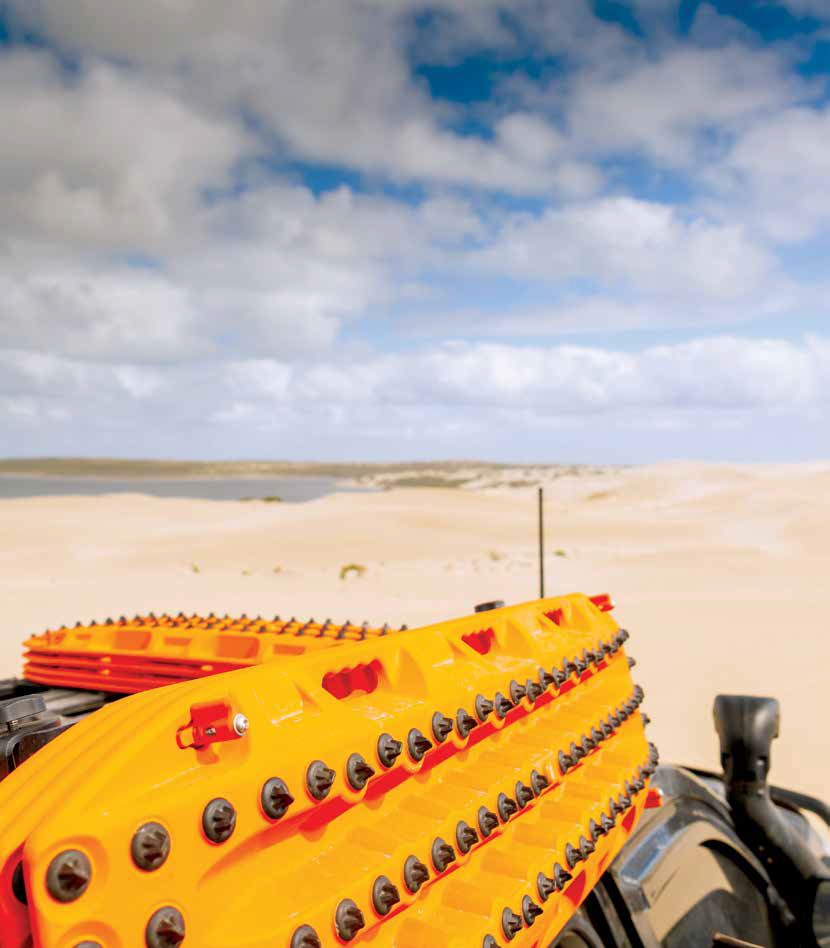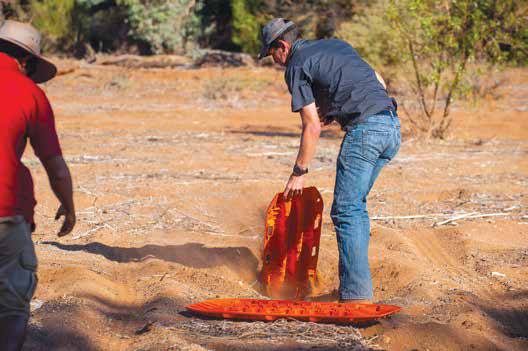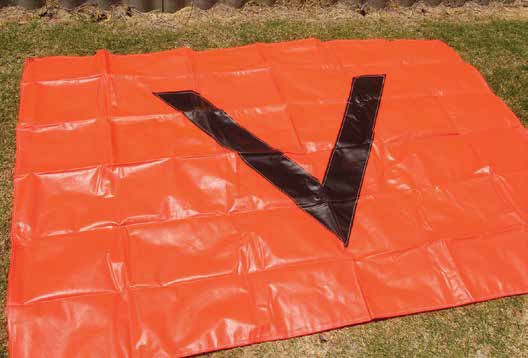
It’s best to be prepared for all situations
It’s easy to assume that if you’re travelling on heavily trafficked routes from campsite to campsite, you won’t need much in the way of safety gear. In an ideal world that would be a safe assumption.
In reality, however, it’s impossible to rely on passers-by and good samaritans in the event of a mishap. How can you be of any help to your fellow wanderers without the right gear?
One of the key responsibilities that everyone should take with them on the open road is being self-sufficient, so next time you’re loading up the wagon here are a few things to consider.
PROTECTION
Just because you’re away from home doesn’t mean you should be without. If you’re undertaking any repairs on the run, or even just chopping up some firewood, be sure to slap on a pair of safety goggles. A solid pair of gloves will be another handy addition to your kit, as will a sturdy pair of enclosed shoes or boots (yep, some folk take no more than a pair of thongs on their tropical adventures).
BEING SEEN
Given the majority of inconveniences, such as flat tyres, that are likely to happen on the side of the road, some road safety supplies are essential. A high-vis vest and some collapsible road cones or witches hats are a good way to alert oncoming vehicles of your predicament so that they can take care as they approach.
If you’re headed into remote regions and there’s a chance you’ll need to attract attention, you can take a leaf out of the boating bible and pack a couple of flares and a V-sheet (an orange plastic sheet with a large black ‘V’ on it) to get the attention of passing aircraft. Bright torches and additional lighting that’s powered independently to your vehicle or van may also be necessary once the sun goes down.

Make sure to be prepared for all conditions if traveling off-road
MECHANICAL
You’re unlikely to be able to fix every single kind of mechanical malfunction, but you should be able to prevent them from evolving into an all-out catastrophe. An in-date fire extinguisher and fire blanket should always be present in your RV and are crucial for any kind of travel. A small oil spill kit is also a useful accompaniment to a fully-loaded toolkit.
OFF-ROAD RECOVERY
Those new to RVing should generally steer clear of radical off-road terrain, so we won’t get into the nitty-gritty of off-road recovery, but if the urge for rutted road persists then there are all kinds of gear you’ll need to consider. What you need is dependant on the kind of terrain you’ll be covering, but on longer trips, where you’re likely to encounter all kinds, it’s best to take the lot.
A long-handled shovel and a pair of traction boards, such as MaxTrax, will become two of your favourite things in soft soil or sand. As it’s necessary to deflate your tyres prior to rolling into the soft stuff, thereby increasing surface area, you’ll need a pressure gauge and an air compressor to pump them back up once you reach the road.

Traction boards will be your favourite things in soft soil
Snatch straps and shackles are loaded with incredible forces, so make sure yours are rated sufficiently and always use a dampening blanket. If you don’t want to fork out the cash for an electric winch, then a hand winch is also an option (just be ready for a workout), but these should never be used with dynamic components such as snatch straps so be sure you have the appropriate chains and such.
A hi-lift jack is one of the most versatile pieces of gear you’ll come across and can be purchased with a number of accessories for multiple uses, including basic hand-winching. A jacking plate or a solid bit of wood will be a useful addition for unstable surfaces.

Hi-lift jack is a versatile piece of equipment
WHAT TO DO IN AN EMERGENCY
STAY PUT
If you become stranded, never leave your vehicle. Pull up in a safe place and try to contact someone for help. There have been a number of occasions which have seen stranded drivers wander off, become disorientated, dehydrated and eventually succumb to exposure. It’s a good idea to have a kit, such as a strobe light, that can attract attention. Bring help to you, don’t go looking for it.
KNOW YOUR LOCATION
Knowing your location will help emergency services get to you faster. Ideally, you’ll know roughly where you are along your intended route. If not, a mobile phone, GPS device or emergency locator beacon may be able to show you or emergency services where you are. You can also download the Emergency+ app onto your smartphone, which uses your phone’s GPS functionality to display your exact longitude and latitude, even when you have no signal.
DIAL 000
Call ‘000’ in the event of an emergency; the call will still go through if you’re calling from a pre-paid mobile with zero credit or if there is no coverage from your particular carrier (it will not connect if there is no reception altogether). Be aware that in some places it can take hours for emergency services to arrive, and be ready to dig in for a while. The operator will walk you through what to do and may be able to assist — just remember to stay calm. Give a clear explanation of the situation so that the dispatcher can determine the services necessary.
EMERGENCY BEACONS
Carrying an emergency beacon may be the only way to get emergency medical assistance if you are in a remote location without phone reception. It’s much better to be safe than sorry.
There are three types of emergency beacon: EPIRB, ELT and PLB.
EPIRB: Emergency Position Indicating Radio Beacons are primarily used on boats. They are quite large and heavy.
ELT: Emergency Location Transmitters are used on aircraft.
PLB: Personal Locator Beacons are the smallest of the three types of emergency beacons, and these are what you want to use on land for 4WDing, biking, hiking and so on.
All emergency beacons will send out a signal on the same frequency, containing your GPS coordinates, which is picked up by the international satellite system for search and rescue. Your location is then relayed on to Australian Rescue Coordination Centre (RCC) in Canberra. The RCC will dispatch a rescue team, usually via helicopter, to your location.

A V-sheet is used to attract the attention of passing aircraft
FIRST AID KITS AND TRAINING
Two things you should never leave home without are a good First Aid kit and the knowledge of how to use it. Administering effective First Aid can mean the difference between life and death in remote areas — it’s dramatic, but true. The purpose of First Aid is to keep an injured or unwell individual in a stable condition until proper medical help is available, and its importance should never be overlooked.
TAKING A COURSE
First Aid courses are available from a number of organisations all around the country. Many can be done in a single day and will run through the basics of CPR and other general practices. More comprehensive courses are also available, as well as some that cater towards specific areas such as asthma, anaphylaxis and heart conditions. You’ll have to pay a small fee to take part, but if you consider the benefits of having such knowledge then the cost is easily justified. For more info, the Red Cross is agood starting point: www.redcross.org.au
PACKING YOUR FIRST AID KIT
There are a wide variety of First Aid kits available; from lightweight, basic versions to fully-loaded rolling medical supply stations. When selecting a kit, it’s important to consider individual needs or pre-existing conditions and provide for them appropriately. This can mean adding to an off-the-shelf kit or even compiling your own. At the very least, your first-aid kit should contain:

A comprehensive medical kit
Category: Features
Written: Wed 01 Jan 2020
Printed: January, 2020
Published By: